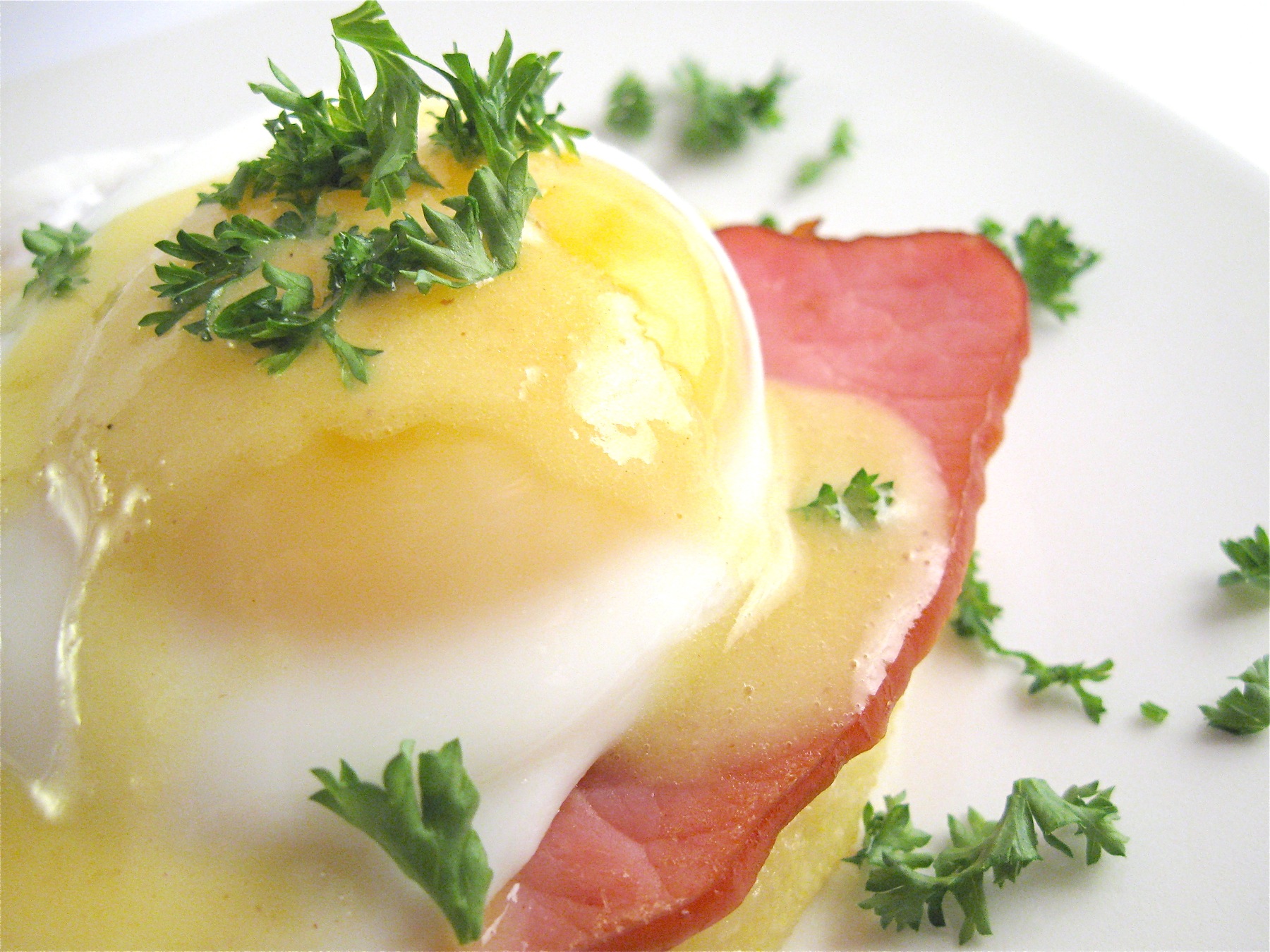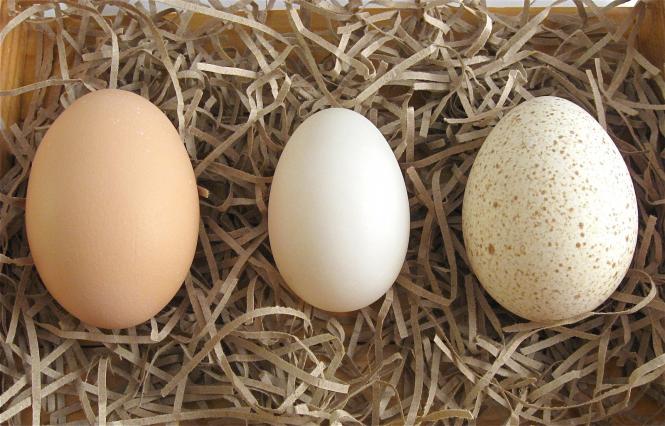Well before its connection to Easter, the humble egg has long been a symbol of spring and renewal in various cultures and religions. Now that Easter is over, it is re-emerging from beneath the bright dyes and artificial chocolate shells to display its true colors as a healthy, hearty food.
From bad to better
In 1972, the American Heart Association recommended severely restricting egg consumption as the best way to control high cholesterol. As a result, the egg was painted with a scarlet dietary reputation and spent decades mired in the category of "bad for you" food. However, recent studies are finally laying to rest this notion by demonstrating that an egg a day could actually help keep the doctor away. In a study published last February, scientists at the University of Connecticut observed that subjects who ate an egg-based breakfast consumed less calories later at lunch than those who had bagels for their first meal of the day. Furthermore, their lower caloric intake lasted as long as 24 hours after the initial meal. The finding adds to a growing body of research that includes a 1999 Harvard study debunking a direct association between egg consumption and heart disease, and a 2008 conclusion that eating eggs can be an effective and healthy component of weight loss. So, while the AHA still recommends watching our cholesterol intake, it no longer singles out whole eggs for exclusion.
That’s a good thing because egg pack a feast of nutrients for a healthy body:
- For brain and nervous system functions, egg yolks are one of the richest sources of choline, which is critical for fetal brain development, adult brain function, and the nervous system. Other B vitamins, such as B6, B12 and folate, help break down homocysteine, an amino acid that damages blood vessels and is a risk factor in heart disease and stroke.
- For healthy vision, eggs contain lutein and zeaxanthin, two carotenoids (the pigments that give fruits and vegetables their color) that support eye health and may help lower the risk of cataracts and age-related macular degeneration.
- For muscle development, eggs provide all of the amino acids needed to build and maintain muscle mass, particularly leucine, which is essential for tissue recovery after physical activity.
With such great nutritional news, eggs are flying off the grocery store shelves, at least in comparison to the recent past. From a peak 451 eggs per capita in 1945, consumption plummeted nearly 50 percent by 1991, before slowly climbing back up to a current rate of approximately 250 eggs per person per year. The renewed popularity of eggs can be attributed to better awareness about their health benefits, but an increase in the varieties available, particularly those dubbed "designer eggs," have also contributed.
An egg is an egg is an egg?
Accounting for more than 10 percent of all egg production, specialty eggs – or "value-added," as they are known in the poultry industry – include terms such as cage-free, organic and free-range, and refer primarily to the conditions in which the laying hens are raised. However, eggs containing higher than usual amounts of certain nutrients, like omega-3 fatty acids and vitamins A and E, are now produced by adding ingredients such as flax seed and fish oils to the hens’ diets. While such natural additives help to increase beneficial content or to lower undesirable ones like cholesterol, others like yellow corn, dried marigold and algae are used simply to affect the color of the yolk to suit consumer preferences. Does the extra effort for a purely aesthetic result really matter? From a marketer’s point of view, the answer is yes.
Consumers commonly, if mistakenly, judge the quality of eggs by the colors of their yolks and shells, believing that brown eggs and darker yolks are healthier or more flavorful. Although hens’ diets may be tailored to increase certain nutritional content, most feed, both conventional and organic, usually affect only the color of the yolk, but have little impact on taste or level of nutrition. Similarly, the different colors of eggshells depend only on the breed of bird. So whether it’s white, brown, blue or speckled, don’t judge an egg by its shell.
Instead, a better gauge for egg quality may be the label on the carton, which ostensibly describes the laying hens’ living conditions. However, even these claims are not as straightforward as they seem. Cage-free implies that the birds roam freely, but this unregulated label simply means that they are not confined in small enclosures. They may, in fact, be crowded in henhouses and regularly injected with antibiotics to prevent the spread of disease. Although the USDA includes free-range among its regulated labeling terms, it requires only that producers give their poultry access to the outdoors – there are no specific standards on duration or the size and quality of that area. Nevertheless, free-range can allow hens to engage in more natural activity such as nesting and scratching in the earth for food. The organic label perhaps comes closest to ideal: under the requirements of the USDA’s National Organic Program, poultry producers must provide their flocks with outdoor access (as in free-range) and with pesticide- and antibiotic-free feed. Of all egg-product labels, only organic is certified by a third party approved by the USDA
The global egg
If there is any difference in the nutrient content of eggs, it lies in the species of bird that laid it. When we think of, talk about, or eat an egg, it is most likely from a chicken. But there are other edible varieties that people around the world regularly enjoy. Tiny quail eggs, for instance, are used for sushi in Japan, as a deep-fried street snack in the Philippines, and as a topping on hot dogs and hamburgers in Colombia. On the opposite end of the size spectrum, a single ostrich egg is equal to more than 20 chicken eggs and has been a traditional food source in Africa, but can now be found on occasion at specialty U.S. food retailers such as Whole Foods.
Perhaps the second most commonly eaten bird egg is the duck egg. In countries such as China, Vietnam, and the Philippines, specially processed duck eggs are very popular, including salted eggs, which are produced by soaking them in brine; pei dan, or "century egg," which is packed in a mixture of clay, ash and lime, then cured for weeks or months to produce a gelatinous, pungent interior; and balut, the Filipino specialty in which a fertilized egg is allowed to develop into an embryo before it is cooked. For less unusual methods of preparation, fresh duck eggs are becoming more popular in the U.S. as they can be cooked in much the same manner as chicken eggs. Though they are only about a third larger, duck eggs contain nearly double the calories and fat as those of barnyard poultry. While dieticians may wince, many gourmets consider these superior qualities for baking, as the higher fat and protein content yield a fluffier texture and richer flavor.
For another alternative egg with a purely American provenance, look no further than the bird that was almost our national symbol: the turkey. It is no surprise if you have never come across a turkey egg at the local grocery or even at the farmers’ market: a turkey hen lays about 100 per year, compared to a chicken’s average of 300. And, quite simply, a turkey egg is more valuable hatched into a full-grown bird than sold in the shell. Nearly 50 percent larger than a chicken egg, its flavor is quite similar to its smaller counterpart although its thick, speckled shell takes some extra effort to crack open. Like duck eggs, turkey ovums are considered excellent for use in baking, but adapting a recipe to incorporate them may require trial and error. Given their general scarcity and higher price, turkey eggs may be best enjoyed as an omelette or simply fried, instead of as a baking experiment.
Whether it’s laid by a chicken, duck or turkey, baked into a cake or hardboiled and eaten plain, the healthy, versatile and delicious egg is everything it’s cracked up to be.
* * * * * * * * * * * * * * * * * * *
RECIPE for Enlightened Eggs Benedict
 This aptly named brunch classic is heavy in calories, though you can lighten it up by replacing the English muffin with polenta and using a vinaigrette in place of Hollandaise sauce. For a bit of indulgence, swap out the plain old chicken egg for a duck or turkey egg*, as shown here.
This aptly named brunch classic is heavy in calories, though you can lighten it up by replacing the English muffin with polenta and using a vinaigrette in place of Hollandaise sauce. For a bit of indulgence, swap out the plain old chicken egg for a duck or turkey egg*, as shown here.
- 1 egg, poached or fried
- 1/3 cup prepared polenta
- 1 slice Canadian bacon
- 1-2 tablespoons Goldenrod Vinaigrette (recipe below)
- Parsley for garnish
On a small plate, shape polenta into small circle and top with bacon and egg, then spoon vinaigrette on top. Garnish with parsley and enjoy.
RECIPE for Goldenrod Vinaigrette
(courtesy of Sam Hoffer from My Carolina Kitchen blog)
The bright, tangy flavor of this simple vinaigrette is a perfect complement to the rich egg yolk and creamy polenta.
- 2 Tablespoons tarragon vinegar or fresh lemon juice
- 1 Tablespoon finely chopped shallot
- 1 teaspoon Dijon mustard
- Dash of hot sauce, such as Tabasco
- 6 Tablespoons extra virgin olive oil
- Salt and fresh ground pepper, to taste
Put all ingredients, except salt and pepper, into a jar and secure lid firmly before shaking well to mix. Alternatively, whisk vigorously or use a stick blender to emulsify the dressing, resulting in a thick, Hollandaise-like sauce. Season with salt and freshly ground pepper.
In the Twin Cities, duck and turkey eggs may be found at the Minneapolis Farmers’ Market from Darryle Powers of Blue Gentian Farm in New Richmond, WI. For availability, contact Darryle by e-mail or telephone (715-781-8169).
 Tracey Paska, a student at the University of Minnesota, is pursuing a self-designed degree in food studies, which combines anthropology, history and sociology as they pertain to the foods we eat. She was born in the Philippines, but now lives in the western suburbs of Minneapolis with her husband. When she's not composing research papers, she writes about the complex, confusing and fascinating connections between food, culture, and society on her blog Tangled Noodle. She also has contributed articles to the Minnesota Women's Press and hopes to make food writing her profession. Her last contribution to Simple, Good and Tasty was The Path to Eating Good/Feeling Good Ends in St. Boni.
Tracey Paska, a student at the University of Minnesota, is pursuing a self-designed degree in food studies, which combines anthropology, history and sociology as they pertain to the foods we eat. She was born in the Philippines, but now lives in the western suburbs of Minneapolis with her husband. When she's not composing research papers, she writes about the complex, confusing and fascinating connections between food, culture, and society on her blog Tangled Noodle. She also has contributed articles to the Minnesota Women's Press and hopes to make food writing her profession. Her last contribution to Simple, Good and Tasty was The Path to Eating Good/Feeling Good Ends in St. Boni.




